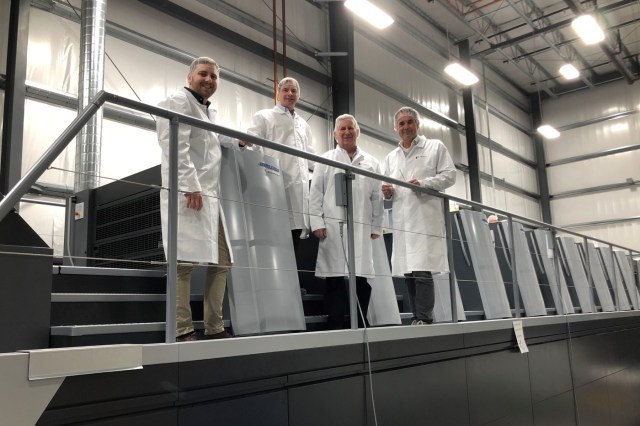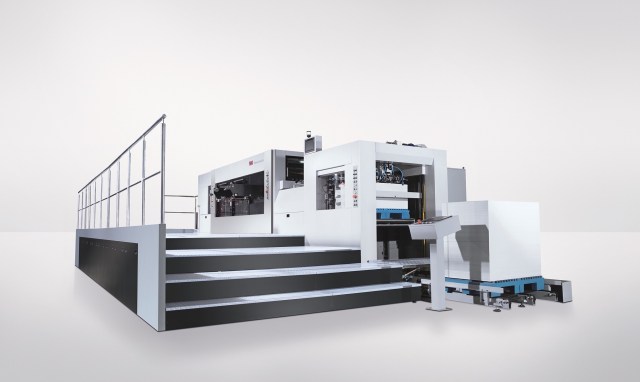
Heidelberg has unveiled a suite of solutions for label printers – namely a new Speedmaster XL 106-D, new CutStar Gen. 4 Push to Stop solution and new FoilStar Cure.
Heidelberg has launched its new Speedmaster XL 106-D, featuring just one die-cutting unit which aims to make it easier for printers to move into rotary die cutting.
The XL 106-D is able to process the thinnest of materials at a high speed of 12,000 sheets per hour.
It punches even the smallest injection holes, which are stripped and extracted immediately as a result of the high-precision magnetic cylinder with 1 µ pressure adjustment.
This high precision, resulting from the cylinder design and uniform cutting, die dispenses with the time-consuming make-ready required when using the flat-bed process due to differences in level within the cutting die.
Heidelberg said this means far shorter setup times, tooling costs that are also up to 50 per cent lower than with a flat-bed die cutter, and three times higher production speeds.
“The new Speedmaster XL 106-D with just one die-cutting unit makes it easier for label printers to move into rotary die cutting and complements the successful Speedmaster XL 106-DD with magnetic cylinder and extraction system, which has been available for a number of years,” Heidelberg head of product management label Markus Höfer said.
The company has also made other launched in the growing labels sector, concentrating on end-to-end digitised solutions in sheetfed offset printing.
“With its digitised sheetfed offset printing solutions, Heidelberg will continue to play a leading role on the growing labels market in the future. We remain a reliable partner and supplier for our customers in this segment, working with them to overcome the challenges of this demanding market,” Höfer said.
Heidelberg has also made available its new Push to Stop CutStar solution, based on a new platform with the latest drive technology, control technology, a new blade geometry, and new peripherals.
“Customers’ growing demands in terms of print speed, stable sheet travel, level of automation, and ease of handling when processing thinner substrates on the CutStar sheeter prompted us to develop a new generation of this system,” Höfer said.
The new CutStar Gen. 4 features high-quality results on foils as thin as 50 grammages, combined with an impressive production output. The fourth-generation sheeter is fully integrated into the Prinect workflow and also the Intellistart system on the press for production based on the Push to Stop principle.
Air/format settings and format changes take place fully automatically, which aims for shorter setup times. The surface treatment integrated into the CutStar is another new feature, ensuring high end-to-end quality by improving ink adhesion. Optimisation is also geared specifically to low grammages as paper increases the production speed by up to 2,000 sheets per hour.
The company also unveiled its new FoilStar Cure, enabling label producers to meet challenging finishing requirements.
In conjunction with another Heidelberg innovation – the DryStar LED Pro dryer – high-gloss metallic effects can be produced. In the FoilStar Cure, drying for the first time takes place right through the foil, which enhances gloss levels.
Heidelberg said cold foil is the perfect solution for a wide range of effects, combined with an impressive processing speed. It also has environmental benefits over aluminum-coated material because it saves on aluminum and makes labels easier to recycle.
As a result of customised indexing lengths during production, and because only the specified parts of the label are foiled, up to 80 per cent less material is used, according to the company.


